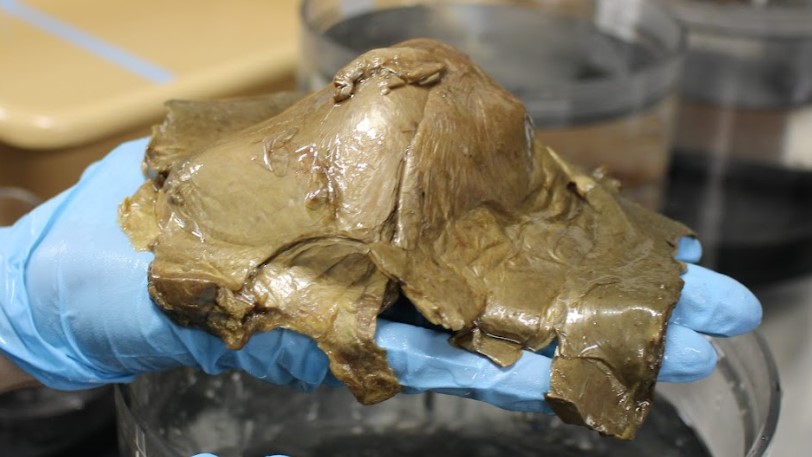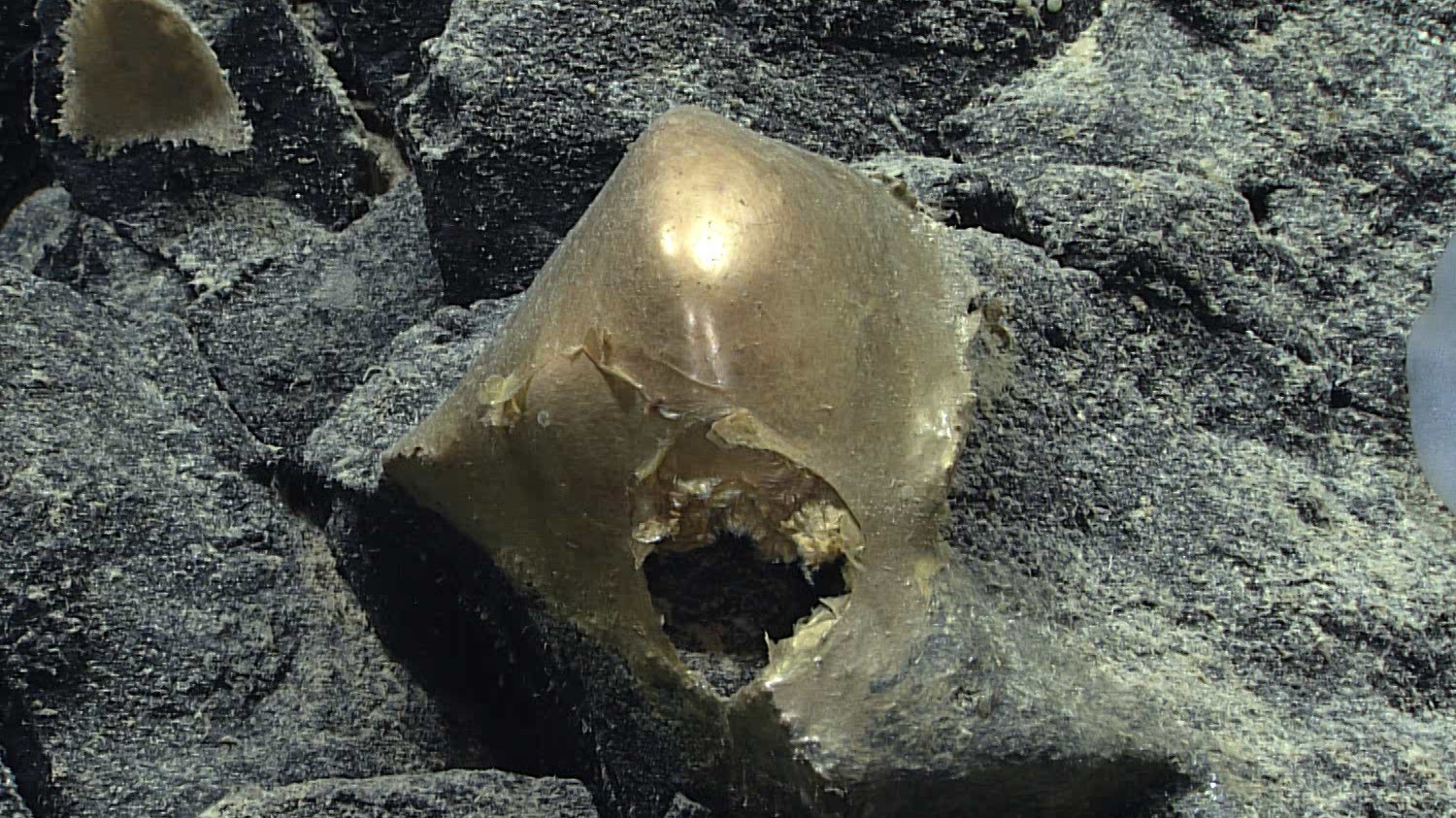'It is biological in origin': 1st analysis of weird golden orb from ocean floor leaves scientists stumped
The golden, dome-shaped object was discovered in the Gulf of Alaska during an NOAA expedition and after bringing it to the surface, scientists still have no idea what it is.

A mysterious golden "orb" found at the bottom of the ocean during a research expedition is "biological in origin" — but scientists have no idea what it is.
"While we were able to collect the 'golden orb' and bring it onto the ship, we still are not able to identify it beyond the fact that it is biological in origin," Sam Candio, the National Oceanic and Atmospheric Administration (NOAA) Ocean Exploration expedition coordinator said in a statement.
"While somewhat humbling to be stumped by this finding, it serves as a reminder of how little we know about our own planet and how much is left to learn and appreciate about our ocean."
The strange, dome-shaped object was found about 2 miles (3,300 meters) beneath the ocean surface on a seamount (underwater mountain) in the Gulf of Alaska. It is about 4 inches (10 centimeters) wide. There appears to be a small hole near the base, and scientists initially thought it could be an egg case or some sort of dead sponge attachment. But after bringing the golden object to the surface, researchers were left baffled.

The team is now trying to work out if the orb is associated with a known species, a new species or represents a previously unknown stage of life. "We likely won't learn more until we are able to get it into a laboratory setting where we can continue to pull from the collective expertise of the scientific community with more sophisticated tools than we are able to maintain on the ship," Candio said.
The NOAA Seascape Alaska expedition that found the orb is a mission to learn more about the relatively unknown deepwater off the shores of Alaska. The team plans to map the region and learn more about the creatures — known and unknown — that inhabit these waters.
Sign up for the Live Science daily newsletter now
Get the world’s most fascinating discoveries delivered straight to your inbox.
"New species have the potential to reveal new sources for medical therapies and vaccines, food, energy, and other societal benefits and knowledge," Candio said. "Collectively, the data and information gathered during this expedition will help us close gaps in our understanding of this part of the planet, so we can better manage and protect it."

Hannah Osborne is the planet Earth and animals editor at Live Science. Prior to Live Science, she worked for several years at Newsweek as the science editor. Before this she was science editor at International Business Times U.K. Hannah holds a master's in journalism from Goldsmith's, University of London.










